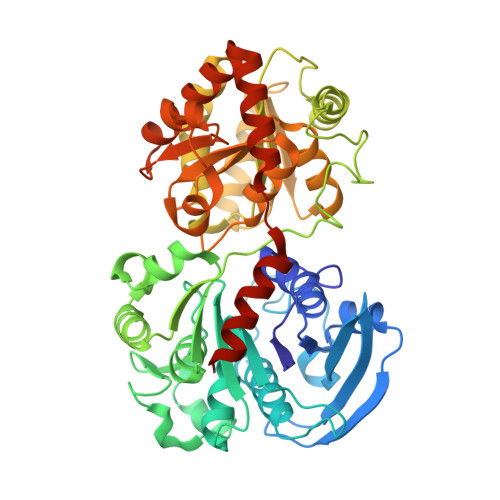Oligosaccharide binding in Escherichia coli glycogen synthase.
Sheng, F., Yep, A., Feng, L., Preiss, J., Geiger, J.H.(2009) Biochemistry 48: 10089-10097
- PubMed: 19761218
- DOI: https://doi.org/10.1021/bi900916t
- Primary Citation of Related Structures:
3CX4 - PubMed Abstract:
Glycogen/starch synthase elongates glucan chains and is the key enzyme in the synthesis of glycogen in bacteria and starch in plants. Cocrystallization of Escherichia coli wild-type glycogen synthase (GS) with substrate ADPGlc and the glucan acceptor mimic HEPPSO produced a closed form of GS and suggests that domain-domain closure accompanies glycogen synthesis. Cocrystallization of the inactive GS mutant E377A with substrate ADPGlc and oligosaccharide results in the first oligosaccharide-bound glycogen synthase structure. Four bound oligosaccharides are observed, one in the interdomain cleft (G6a) and three on the N-terminal domain surface (G6b, G6c, and G6d). Extending from the center of the enzyme to the interdomain cleft opening, G6a mostly interacts with the highly conserved N-terminal domain residues lining the cleft of GS. The surface-bound oligosaccharides G6c and G6d have less interaction with enzyme and exhibit a more curled, helixlike structural arrangement. The observation that oligosaccharides bind only to the N-terminal domain of GS suggests that glycogen in vivo probably binds to only one side of the enzyme to ensure unencumbered interdomain movement, which is required for efficient, continuous glucan-chain synthesis.
- Department of Chemistry, Michigan State University, East Lansing, Michigan 48824, USA.
Organizational Affiliation:



























